
“The ant [is] practically eating the animal alive. If we see them wandering around, they look like zombies.” That’s how tawny or Rasberry crazy ants (Nylanderia fulva) are killing the Guanacaste’s fauna, according to a description by the director of the Taboga Forest Reserve, Juan de Dios Astorga. “They go around like bumper cars without eyes, bumping against stones, against tree trunks. They end up dying from dehydration, from malnutrition, because if they can’t see, they can’t get the resources to be able to survive.”
The crazy ant is an invasive species native to South America that the State Phytosanitary Service (Spanish acronym: SFE) detected in sugarcane fields in Grecia in 2017, and in 2020, the SFE declared it a plague. It wasn’t until last year that they detected its presence in Guanacaste.
Although it’s unclear how the ant arrived in the province, authorities suspect that it was through sugar cane seed transported from Grecia to Cañas.
Since its arrival in the sugar cane canton, the plague began to spread from agricultural areas to the Taboga Forest Reserve, the first Protected Wildlife Area (Spanish acronym: ASP) in the country to suffer from the impact of the crazy ants. This has created the horror scene that Astorga commented on in his video: turtles, coatis, snakes and all kinds of insects eaten alive.
Voracious Like a Fire
They eat everything, they disperse very easily, they don’t compete with each other and they don’t have a natural enemy in the country that can stop them. The above characteristics form the perfect storm for the spread of a plague like the crazy ant.
According to Fabián Herrera, agronomist and SFE inspector in the Chorotega Region, these small red ants walk erratically. They don’t walk in a row like other ant species do, which is where their name comes from.
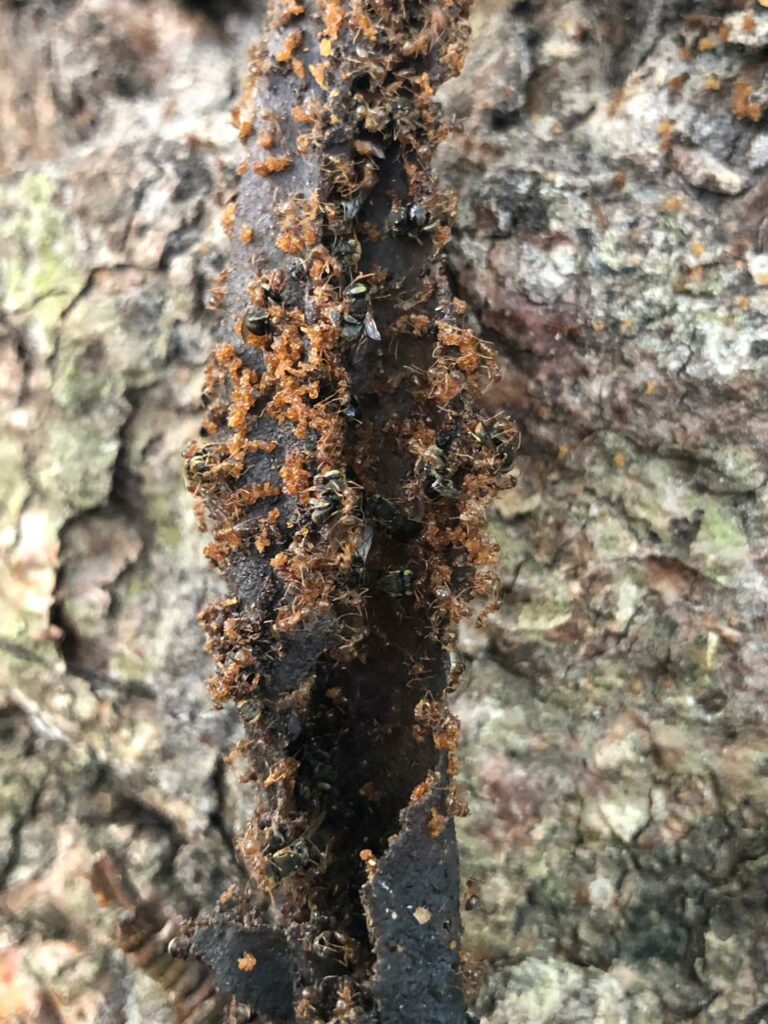
The plague attacks other insects such as meliponine bees. Authorities explain that where crazy ants are present, there is no type of arthropod (invertebrate animals such as insects, arachnids and crustaceans) that survives.Photo: ACAT
They have high population densities, are very dominant and quite aggressive, which causes the elimination of other species and the long-term decline of biodiversity.
“It can be quite risky if it begins to spread to other protected areas and there begins to be a decline in birds, reptiles, small amphibians and other insects. There are even indications that it can change the landscape of an area,” affirmed Herrera with concern.
The same concern is shared by Alexander León, the director of the Arenal Tempisque Conservation Area (ACAT), to which the reserve belongs. He explained that in wetland areas in other countries, about 74% of the species have disappeared and, in some other microclimates, up to 90% of species have been affected.
The ant, from what we have seen, goes in a kind of advance as if it were a fire. There comes a time when, if we do nothing, well, it is practically going to consume a large number of species,” affirmed León.
Around 15% or 20% of the nearly 300 hectares (about 740 acres) of the forest reserve already have this plague present, and they’ve already counted more than 21 species of animals affected, according to León. Within the reserve, it has consumed entire colonies of bees such as meliponines. Where there is the presence of crazy ants, practically no type of arthropod (invertebrate animals such as insects, arachnids and crustaceans) has been left alive.
The crazy ant also feeds on the soft tissues and secretions of larger vertebrate species, which is why they attack the eyes, nose and ears of animals such as turtles, snakes, iguanas and coatis.
In some cases, animals die from suffocation because the ant gets into the respiratory pathway, or from the temporary or permanent blindness that they cause because it prevents them from feeding or hydrating themselves. Another impact of this plague is related to the influence it can have on the behavior of other species.
Imagine what it is like for a troop of a certain number of animals to not even be able to go rest because the ants won’t let them,” explained León.
Crazy ants have affected other countries such as Colombia. The ACAT official commented that they developed a mechanism there to detect the severity of the plague in a certain area.
It consists of placing a plastic cup that is generally used to carry food and placing a bait of ham or sausage in it and leaving it for 20 minutes. Then they collect the container, put it in a bag, put it in the freezer so that the ants die from the cold and finally do a count. In Colombia, the alarms went off because they located more than 100 ants in those traps, which is considered a very high density.
“And to bring it here to the case of the Taboga Forest Reserve, exactly the same test was done and in the trap that had the fewest ants, 485 were found and from there, the other traps went up. Some with 800, 900 until they reached a trap where almost 1,600 ants were found,” warned León.
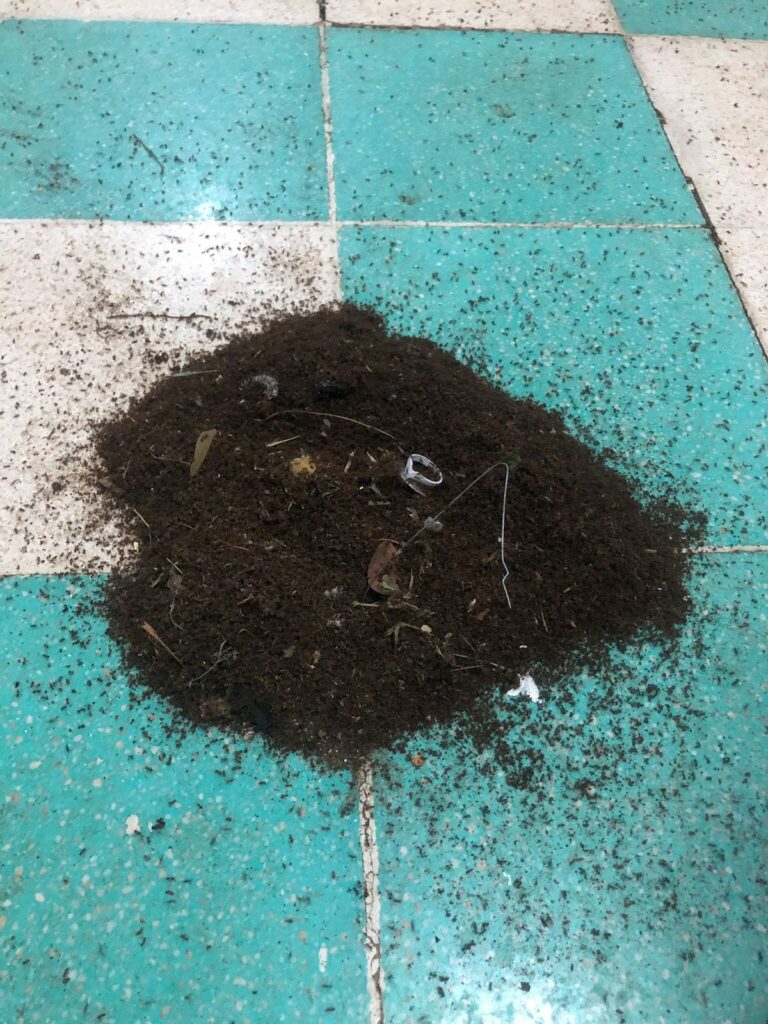
Crazy ants have high population densities. They are very dominant and quite aggressive towards other insects. In addition, they can cause damage to houses by getting into electrical outlets or air conditioners, which can cause short circuits and failures in electrical equipment.Photo: ACAT
The Remedy and the Disease
This same year, countries such as Colombia and Argentina prohibited the use and importation of the pesticide called fipronil, because it is “a risk to wild and honey bees, even when appropriate mitigation measures were applied,” stated the Argentine government.
Meanwhile, in Costa Rica, the Contentious Administrative Litigation Court suspended the Executive Decree that prohibited the domestic and industrial use of this same product, due to a lawsuit from the company ECO Company S.A.
Now this pesticide responsible for the death of millions of bees in Costa Rica and around the world will be the main weapon to combat the crazy ant.
A resolution from the SFE, announced on August 23, establishes that the use of fipronil will be carried out in a coordinated manner with the technicians of the Agricultural Industrial Sugarcane League (Spanish acronym: LAICA).
Herrera, from the SFE, admitted that they should continue looking for options with less environmental impact but at the moment, this pesticide has been the most effective in reducing populations of the plague through the use of baits, in other words, a solid matter impregnated with an element that eliminates the insect. For example, a mixture of fish meal with fipronil. These baits that are applied in the field are mainly aimed at crops.
He added that the use of this bait needs to be very localized to contain those places where there are more populations and should not be a general fumigation. The extended permit to use this product on sugar cane is valid until December 31 of this year. Herrera explained that if they detect any inappropriate application, this extension of use can be revoked.
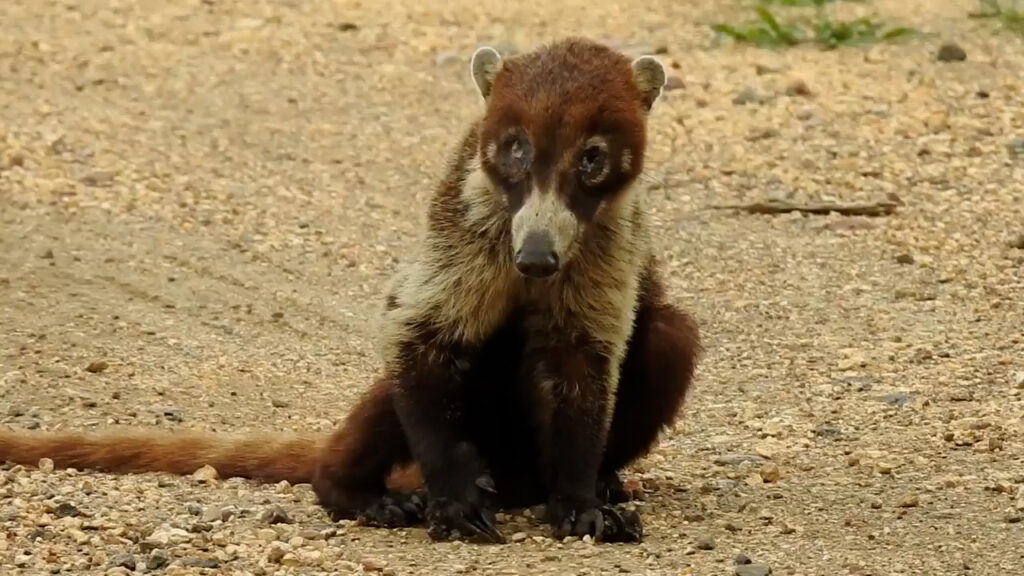
Crazy ants feed on the soft tissues and secretions of mammals such as coatis. They can attack the eyes and cause temporary or permanent blindness.Photo: Video screenshot from the director of the Taboga Reserve, Juan Astorga.
“I believe that as long as they use it as the technique indicates, there won’t be any problems,” said the inspector, who, at the same time, confirmed that the SFE has very limited personnel in the Chorotega region. There are only five officials, so it’s impossible for them to look after the situation personally.
The way in which this pesticide is applied is something that greatly worries the president of the National Chamber of Beekeeping, Juan Bautista Alvarado.
“While it’s true, the Ministry of Agriculture (MAG) has indicated that the product will be used in baits, neither the health service nor MAG have the capacity to supervise or control that people in sugarcane fields do not use it by fumigating,” he stressed.
Alvarado affirmed that if this product continues to be used as it has been up until now, by 2035, some areas of the country will be left without bees, since 98% of the results from SENASA’s laboratory indicate that the cause of death of bees is fipronil.
In Guanacaste, poisonings have occurred in the Papagayo area, in Liberia, in Abangares, and all of these poisonings that have occurred are caused precisely by fipronil,” he emphasized.
The National University’s Regional Institute for Studies on Toxic Substances (Spanish acronym: IRET) recommends canceling all registrations of products containing fipronil and prohibiting its importation, formulation, transportation, exportation and use at the national level, including professional use, such as veterinary and agricultural use.
According to Alexander León from ACAT, efforts are being made to search for biological controllers: microorganisms such as fungi that function as an alternative to the use of pesticides. However, he explained that rigorous research and consultation is necessary so that the solution doesn’t become a second problem because in the past, there have been situations with fungi that have affected amphibians.
Regarding the use of fipronil within ASP, he emphasized that it’s a debate and a challenge that lies ahead for them.
“We think that perhaps at some point, measures would have to be taken. Maybe if this product were to be applied in a very, very, very controlled way. Because if not, the ecosystem in general is what is going to suffer the most,” he added.


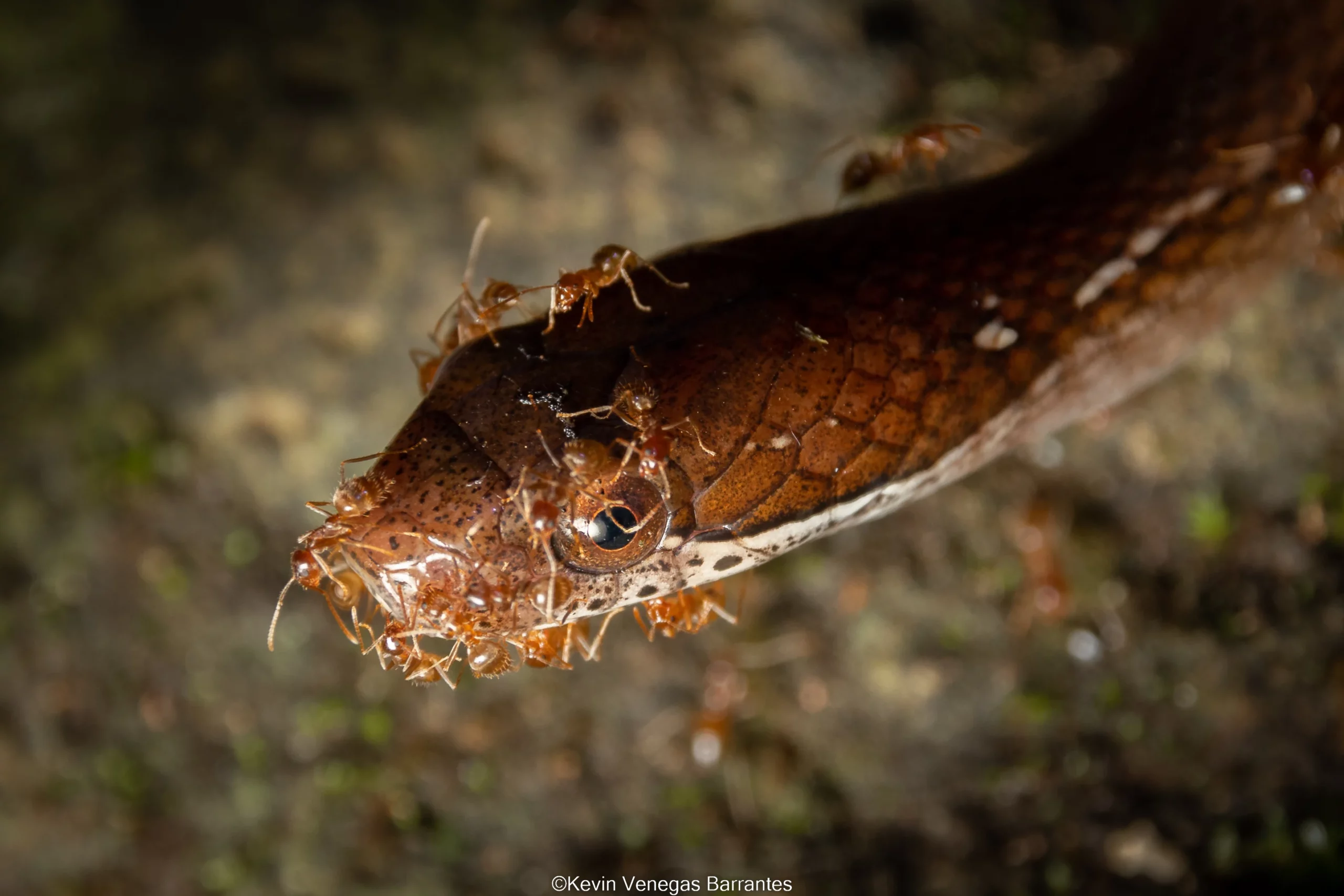
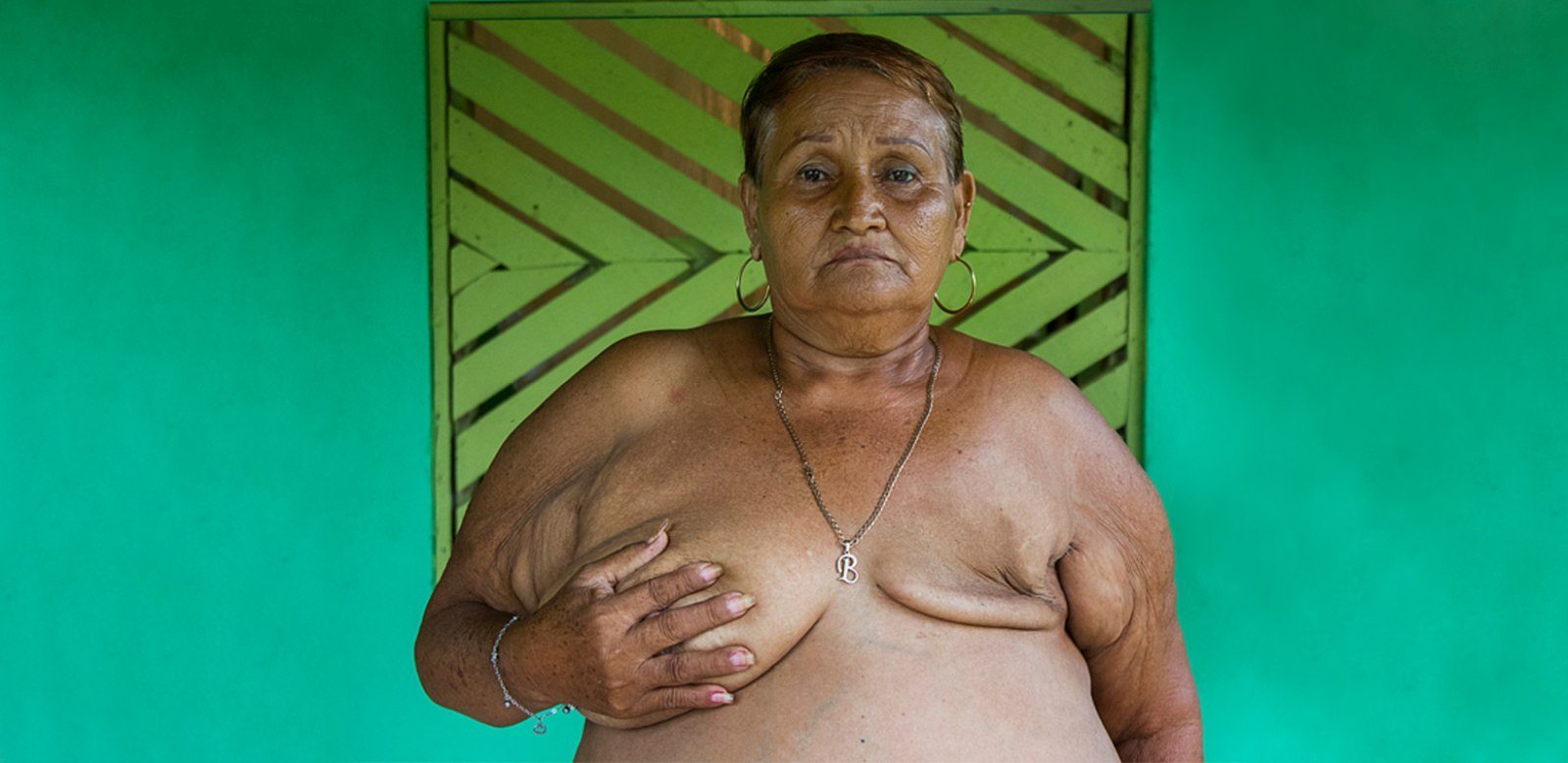

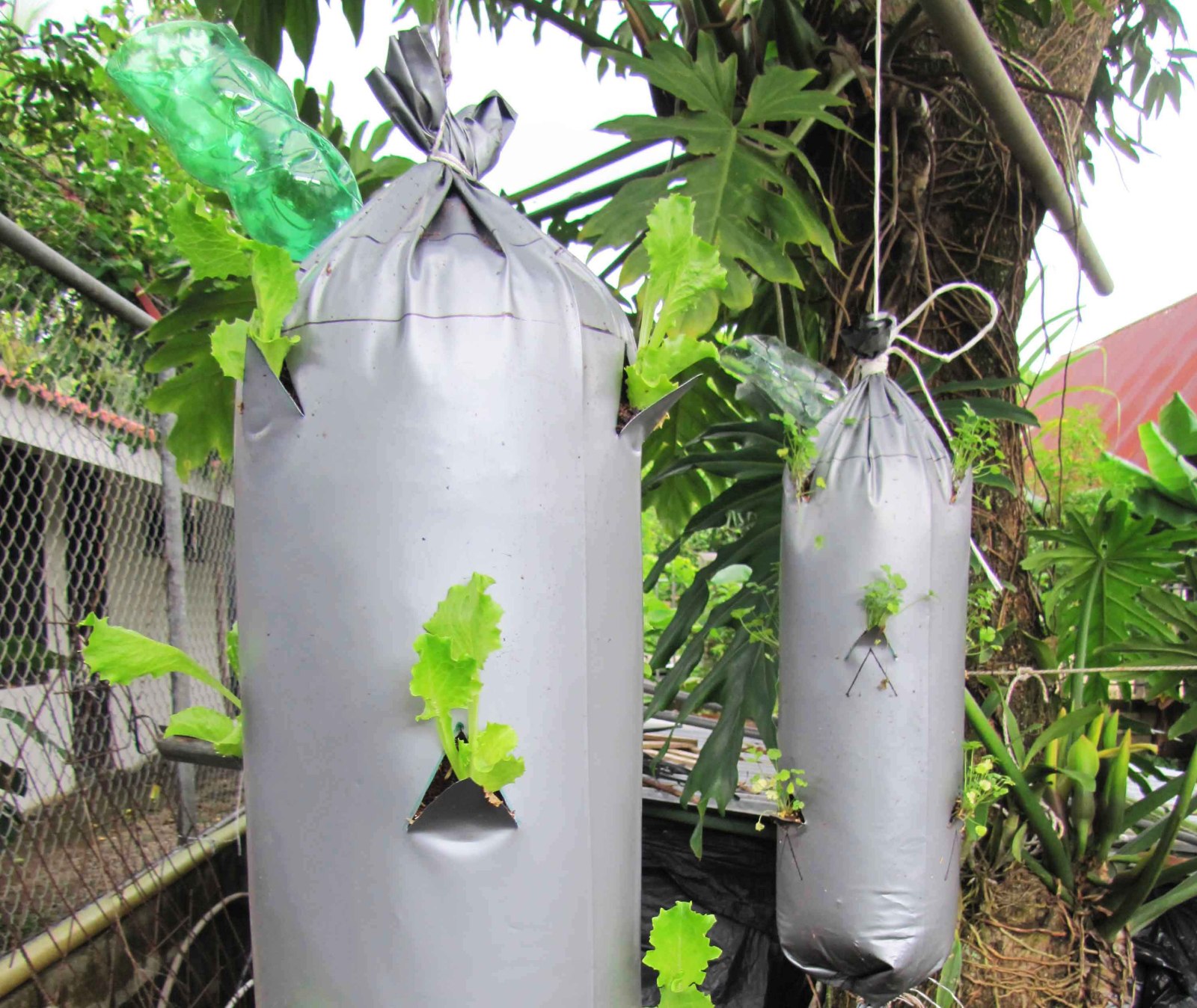

Comments